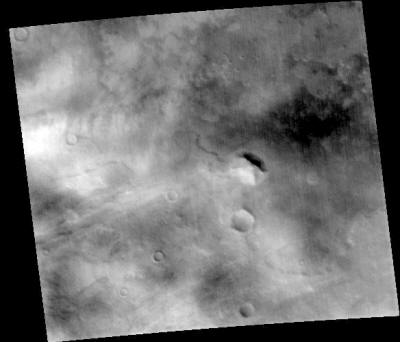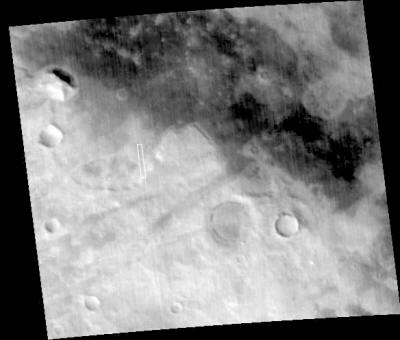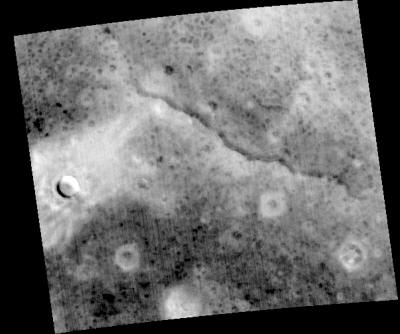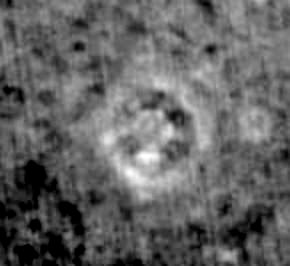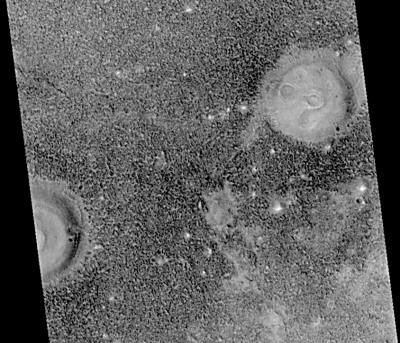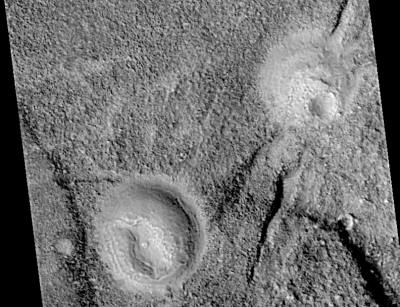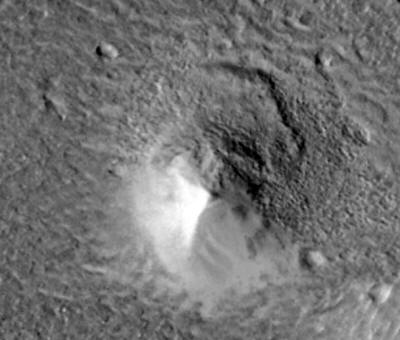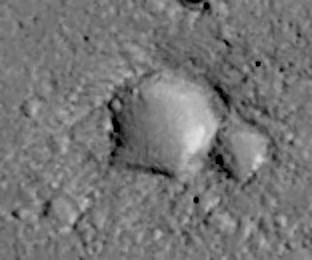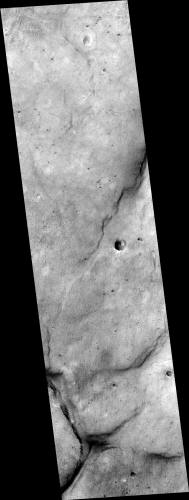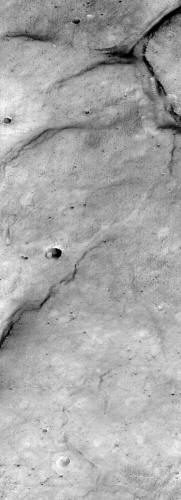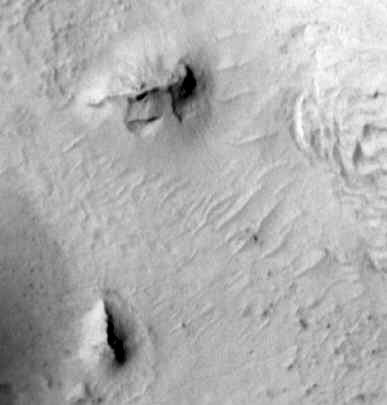|
by Richard Hoagland from EnterpriseMission Website
Here is another view of the same object from M0300620. From M0200625. Several uplifted domes (below), one of which has a regular, black striped radial pattern emanating from a hexagonal(?) core. Also note the square formation in the center right, which may be due to scan lines in the image.
Unfortunately, the image is from the medium resolution camera, making absolute judgments about the character of these features impossible.
A close-up of the "Hex-core Dome"
From M0301636, in Mare Acidalium, just outside Cydonia (below). Described as "knobs," these nearly perfectly round domes are almost identical in size (at least the portion that can be seen), proportion and make-up. Note that the craters in these objects do not display any evidence of ejecta.
Their appearance is much more akin to a dented domical hubcap than a random, volcanic uplift. It should also be noted that the conventional "differential erosion" explanation for Cydonia's topography is completely inadequate to explain smooth, rounded features such as these. From M04-00576, also in Cydonia/Mare Acidalium. Very similar objects, with similar comments. Note possible buried circular structure tangent to lower left dented dome. From M02-04404. A narrow angle strip that just catches the Southern portion of some Cydonia-like "fretted terrain." In the top portion of the image below, is a distinct, pyramidal formation.
There are at least three clearly defined faces with the upper right portion buried under debris (below). MOC narrow-angle image M02-04404
North of this pyramid, stretching back toward the "Cydonia-like" terrain is an unusual geometric crater cluster (below).
This image below, M04-00291 (found by Hoagland) is certainly the most extraordinary. Located in an ancient ocean bed which has rifted apart due to some sort of cataclysmic stress are nothing less than a series of interlocking, reinforced and still intact translucent, glass-like tubes!
Reinforced by regularly spaced, cylindrical arches, this clearly defined translucent structure seems to be running along a hollowed out section of the former ocean floor. The clear "glass" tube can be easily seen running the length of the rift, and there is a distinct edge where the clear tube wraps around the arches.
The composition
of the tube is given away even more directly by a brilliant specular
reflection. This reflection is not associated with any kind of
geologic feature (it seems to be simply hanging in space),
effectively destroying the argument that "wind polished rocks" are
responsible for the many brilliant features of the Martian surface.
This is an example real sand dunes on the surface of Mars
(above). Note that
they are irregularly spaced, vary in length, have diffuse edges and
are the same color and texture as the surrounding terrain. They also
are restricted mostly to flat, wide plains, and are not parallel to
each other, even when the topography does not interfere with wind
patterns.
To try and explain away such unique and obviously
non-geologic
objects as the products of mere wind erosion is laughable. What
these object appear to be are the supports for some sort of
underground tunnel or transportation system.
The reality of course is that wind had nothing to do with the
formation of these features. What Edgett and Malin seem to be
dancing around is the obvious -- they are artificial.
|

